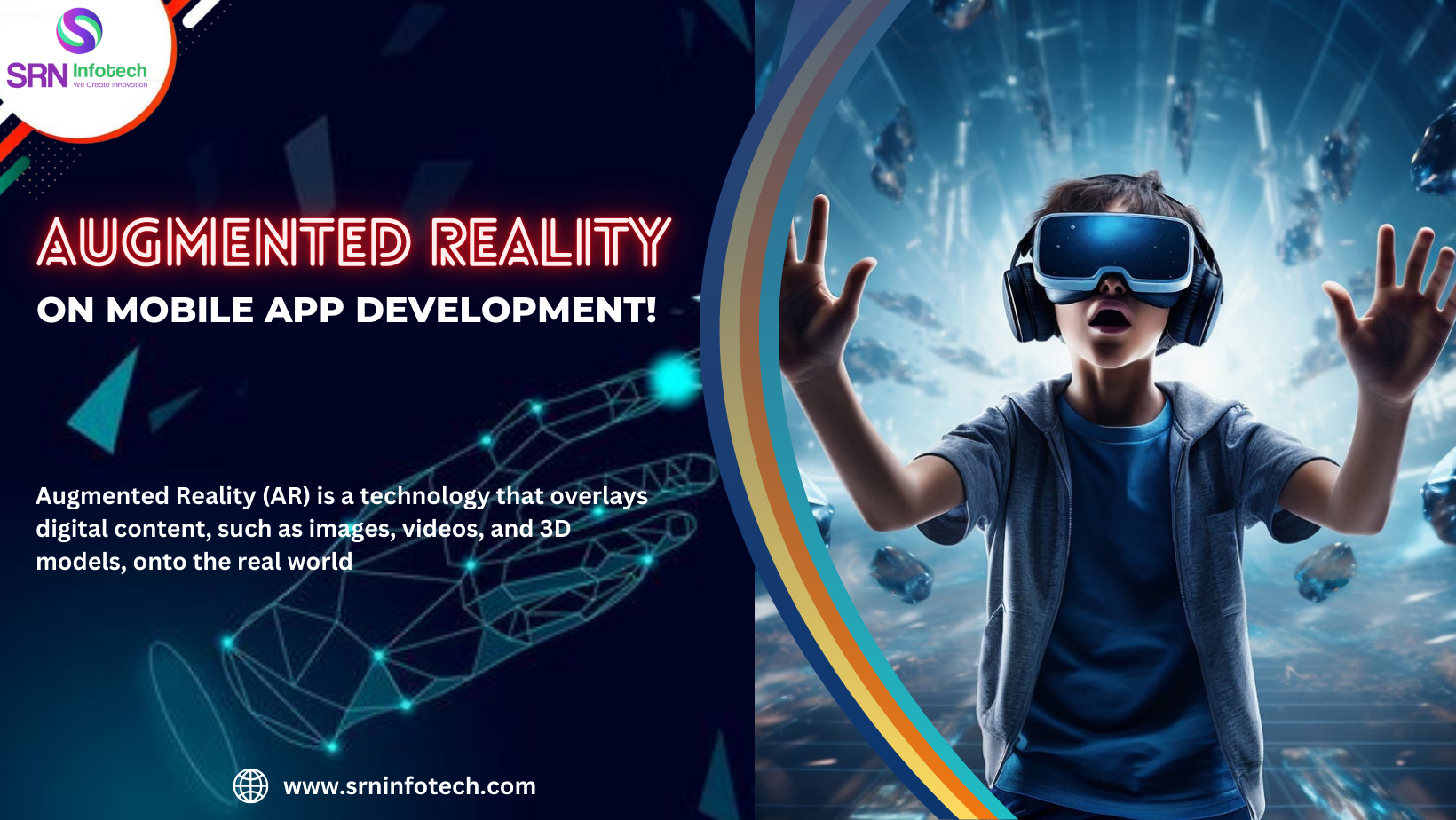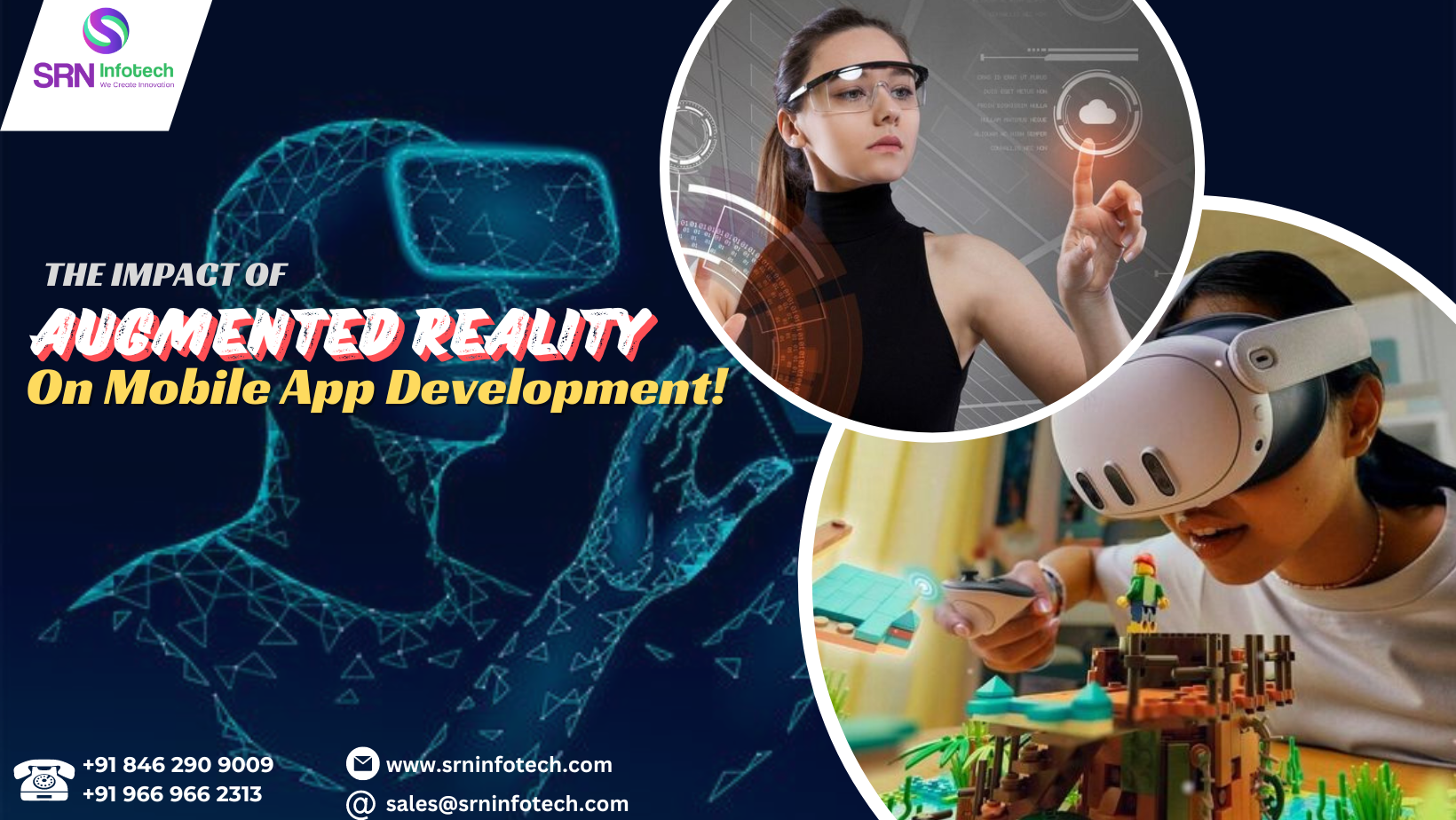The Impact of Augmented Reality (AR) on Mobile App Development
✅ What is Augmented Reality (AR) ?
Augmented Reality (AR) is a technology that overlays digital content, such as images, videos, and 3D models, onto the real world, enhancing the user’s perception of their surroundings. Unlike Virtual Reality (VR), which creates an entirely immersive digital environment, AR blends the physical and digital worlds by superimposing computer-generated elements in real-time through devices like smartphones, tablets, AR glasses, or headsets.
✅ Enhanced User Experiences of Augmented Reality (AR):
AR allows developers to create more interactive and engaging apps by overlaying digital information on the physical world. For example, in retail, AR enables users to virtually try on clothes or visualize how furniture would look in their homes, leading to more informed purchasing decisions. This level of interactivity enhances the user experience, making apps more compelling and valuable.
✅ Application on Augmented Reality (AR) in Various Industries:
➡️ Gaming: AR games like Pokémon GO allow players to interact with virtual characters in real-world locations, blending gaming with physical exploration.
➡️ Retail: Apps like IKEA Place use AR to help customers visualize products in their spaces before making a purchase.
➡️ Education: AR apps are enhancing learning experiences by bringing educational content to life, making complex subjects more understandable.
➡️ Healthcare: AR is being used for medical training and patient education, allowing for more accurate diagnosis and treatment plans.
➡️ Real Estate: AR apps allow potential buyers to take virtual tours of properties, even before they are built, providing a more immersive experience than traditional photos or videos.
➡️ Navigation: AR helps improve navigation by overlaying directions and points of interest on the real-world view through devices.

✅ How Augmented Reality (AR) Works:
AR typically involves three key components:
➡️ Camera and Sensors: The device captures the real-world environment through its camera and uses sensors like GPS, accelerometers, and gyroscopes to understand the user’s location and orientation.
➡️ Processing: The device processes the input from the camera and sensors to detect the physical environment, track movements, and determine how to place digital content.
➡️ Display: The processed digital content is overlaid on the real-world view and displayed on the screen of the device, creating an augmented view.
✅ Future of AR in Mobile Apps:
As AR technology continues to evolve, its integration into mobile apps is expected to grow. The development of more powerful and affordable AR hardware, along with advancements in software, will likely reduce the barriers to entry. This will lead to wider adoption across industries and an increase in innovative AR applications that enhance the way users interact with the world through their mobile devices.
Its ability to merge the digital and physical realms opens up a world of possibilities, driving more immersive, interactive, and engaging user experiences across various industries. As AR technology continues to mature, its impact on mobile app development will only become more pronounced, setting the stage for a future where AR is a standard feature in mobile apps.
————————————————————————————————————————
Contact Our Expert Now:
Email: sales@srninfotech.com
WhatsApp: +91 84629 09009/ 96696 62313


